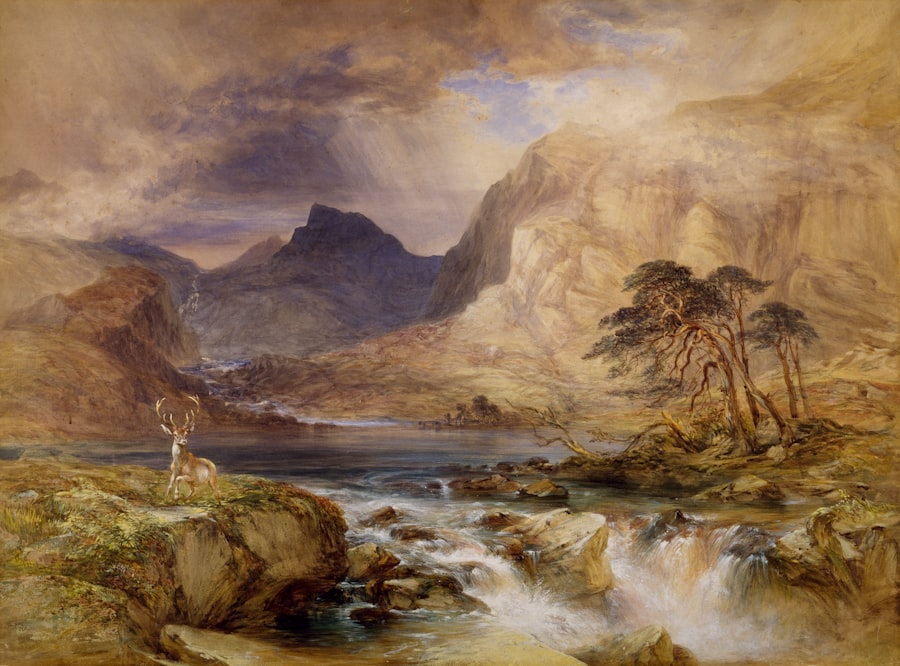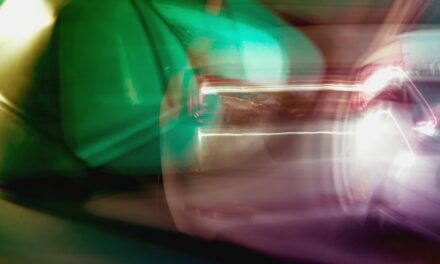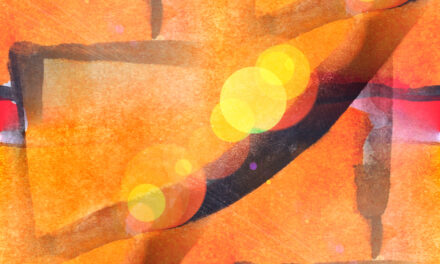Digital art possesses a rich and fascinating history dating back to the 1950s. It commenced with the development of computers and the emergence of digital technology. Initially, digital art was primarily utilised for scientific and mathematical purposes, but artists soon began to explore its creative potential.
One of the earliest examples of digital art is the work of Ben Laposky, who created intricate patterns using an oscilloscope in the 1950s. This marked the beginning of a new era in art, as artists started to experiment with computer-generated imagery and digital manipulation. The 1980s witnessed significant advancements in digital art with the introduction of personal computers and software programmes that allowed artists to create and manipulate images digitally.
This led to the rise of digital painting, 3D modelling, and animation. Artists such as John Whitney and Lillian Schwartz were pioneers in the field, using computers to create mesmerising visual effects and animations. The 1990s brought further advancements with the development of graphic design software such as Adobe Photoshop and Illustrator, which revolutionised the way artists could create and manipulate digital images.
Today, digital art has become an integral part of the art world, with artists using a wide range of digital tools and techniques to create stunning and innovative works of art.
Summary
- Digital art has a rich history dating back to the 1950s, with early pioneers experimenting with computer-generated imagery and digital manipulation.
- The tools and techniques of digital art have evolved significantly, with the use of software such as Adobe Photoshop, Illustrator, and Procreate, as well as digital drawing tablets and styluses.
- Digital art has had a significant impact on traditional art, influencing new styles and approaches, and blurring the lines between digital and traditional mediums.
- The rise of digital art in the modern age has been fuelled by the accessibility of technology and the ability to share and showcase artwork online through social media and digital platforms.
- Digital art plays a crucial role in contemporary culture, from digital illustrations and animations in advertising and entertainment to digital art installations in galleries and public spaces.
- The future of digital art is likely to see further advancements in technology, leading to new tools and techniques, as well as continued integration with traditional art forms.
- To get started in digital art, aspiring artists can invest in a digital drawing tablet and software, practice using online tutorials and resources, and seek inspiration from digital art communities and exhibitions.
The Tools and Techniques of Digital Art
The Role of Graphics Tablets
One of the most popular tools for digital art is the graphics tablet, which allows artists to draw directly onto a computer screen with a stylus. This provides a natural and intuitive way to create digital artwork, mimicking the experience of traditional drawing and painting.
Software Programs and Their Capabilities
In addition to graphics tablets, artists also use software programmes such as Adobe Photoshop, Corel Painter, and Procreate to create and manipulate digital images. These programmes offer a wide range of tools and features, including brushes, layers, and filters, that allow artists to experiment and push the boundaries of their creativity. Digital art also encompasses 3D modelling and animation, which allows artists to create three-dimensional objects and characters that can be manipulated and animated in a virtual space.
Expanding Creative Horizons
This opens up a whole new world of possibilities for artists, allowing them to create immersive and interactive experiences for their audience. In addition to these tools, digital artists also use photography, video editing software, and digital printing techniques to bring their creations to life. The combination of these tools and techniques has revolutionised the way art is created and experienced, allowing artists to push the boundaries of traditional art forms and explore new realms of creativity.
The Impact of Digital Art on Traditional Art

The rise of digital art has had a profound impact on traditional art forms, challenging the boundaries of what is considered art and pushing the limits of creativity. Digital art has opened up new possibilities for artists, allowing them to experiment with new techniques and mediums that were previously unavailable. This has led to a blurring of the lines between traditional and digital art, with many artists incorporating digital elements into their traditional artwork.
For example, painters may use digital tools to enhance their paintings or create digital prints of their work, while sculptors may use 3D modelling software to design their sculptures before bringing them to life in the physical world. Furthermore, the accessibility of digital art has democratised the art world, allowing artists from all backgrounds to create and share their work with a global audience. This has led to a diversification of artistic styles and voices, as artists are no longer limited by traditional art institutions or physical barriers.
Digital art has also had a significant impact on the way art is consumed and experienced, with the rise of digital galleries and online platforms that allow people to discover and purchase artwork from around the world. This has opened up new opportunities for artists to reach a wider audience and connect with collectors and art enthusiasts in new and innovative ways.
The Rise of Digital Art in the Modern Age
In the modern age, digital art has experienced a significant rise in popularity and recognition within the art world. With advancements in technology and the widespread use of social media and online platforms, digital art has become more accessible than ever before. Artists are able to share their work with a global audience instantly, reaching people from all walks of life.
This has led to a surge in interest and appreciation for digital art, with many artists gaining recognition and success through online platforms such as Instagram, Behance, and Etsy. Furthermore, the rise of digital art has also been fuelled by its integration into popular culture and entertainment. Digital art is now widely used in advertising, film, video games, and virtual reality experiences, showcasing its versatility and impact on modern media.
This has led to a growing demand for digital artists in various industries, creating new opportunities for artists to showcase their skills and creativity on a global scale. As a result, digital art has become an integral part of contemporary culture, influencing trends in design, fashion, and visual communication.
The Role of Digital Art in Contemporary Culture
Digital art plays a significant role in contemporary culture, shaping the way we perceive and interact with visual media. With the rise of social media and online platforms, digital art has become an integral part of our daily lives, influencing trends in design, fashion, and visual communication. Artists are able to connect with audiences from around the world instantly, sharing their work and engaging with their followers in real-time.
This has led to a democratisation of art, as people are able to discover and support artists from diverse backgrounds and styles. Furthermore, digital art has also become a powerful tool for social commentary and activism, allowing artists to address important issues such as politics, social justice, and environmental sustainability. Through their work, artists are able to raise awareness and spark conversations about pressing issues facing our society.
This has led to a redefinition of what it means to be an artist in the modern age, as many creators use their platform to advocate for change and inspire others through their artwork. As a result, digital art has become a driving force in shaping contemporary culture, influencing how we perceive and engage with visual media in our daily lives.
The Future of Digital Art

The Rise of Immersive Experiences
Furthermore, advancements in artificial intelligence (AI) are also shaping the future of digital art, allowing artists to explore new tools and techniques that were previously unimaginable. In addition to technological advancements, the future of digital art is also influenced by changing societal attitudes towards creativity and expression.
Diversification of Styles and Voices
As more people embrace digital media as a form of artistic expression, we can expect to see a diversification of styles and voices within the digital art world. This will lead to new opportunities for collaboration and cross-disciplinary work, as artists from different backgrounds come together to create groundbreaking projects that challenge traditional notions of art.
A Bright and Boundless Future
Overall, the future of digital art is bright and full of potential, as artists continue to push the boundaries of what is possible in the digital realm.
How to Get Started in Digital Art
If you’re interested in getting started in digital art, there are several steps you can take to begin your journey as a digital artist. Firstly, it’s important to invest in the right tools and equipment that will allow you to create digital artwork effectively. This may include purchasing a graphics tablet or stylus that suits your needs, as well as selecting software programs that align with your artistic goals.
There are many resources available online that can help you choose the best tools for your specific needs. Once you have your tools in place, it’s important to familiarise yourself with the software programs you’ll be using. Many software companies offer tutorials and resources that can help you learn how to use their programs effectively.
Additionally, there are countless online communities and forums where you can connect with other digital artists who can offer advice and support as you navigate your artistic journey. Finally, it’s important to practice regularly and experiment with different techniques to find your unique style as a digital artist. Don’t be afraid to make mistakes or try new things – this is all part of the learning process!
By immersing yourself in the world of digital art and staying open to new ideas and inspiration, you can begin your journey as a digital artist with confidence and enthusiasm.
If you are interested in learning more about different art movements, you may want to check out an article on Impressionism. This article provides an in-depth look at the Impressionist movement and its impact on the art world. Understanding different art movements can help you gain a deeper appreciation for the evolution of art and how it has influenced digital art today.
FAQs
What is digital art?
Digital art refers to any artistic work or practice that uses digital technology as part of the creative or presentation process. This can include digital painting, 3D modelling, animation, and other forms of visual art created using digital tools and techniques.
What are the different types of digital art?
Some common types of digital art include digital painting, pixel art, 3D modelling and rendering, digital photography, and digital collage. Digital art can also encompass multimedia works, interactive installations, and digital animation.
What are the advantages of creating digital art?
Creating digital art offers several advantages, including the ability to easily correct mistakes, experiment with different techniques and styles, and share work online. Digital tools also provide a wide range of creative possibilities, such as using layers, filters, and digital brushes.
What software and tools are commonly used in digital art?
Popular software for digital art includes Adobe Photoshop, Corel Painter, Procreate, and Autodesk Maya for 3D modelling. Digital artists also use graphic tablets, styluses, and digital cameras to create their work.
Is digital art considered a legitimate form of art?
Yes, digital art is widely recognised as a legitimate and valuable form of artistic expression. Many galleries and museums now exhibit digital art, and digital artists are gaining recognition and success in the art world.
How can I get started with digital art?
To get started with digital art, you can invest in a graphic tablet and stylus, and explore different digital art software. There are also many online tutorials and courses available to help beginners learn digital art techniques and develop their skills.




